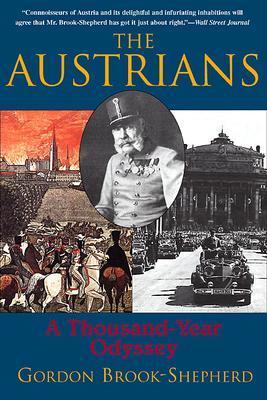
Fin-de-Siècle Vienna: Politics and Culture
Book Description
A city on the brink of transformation pulses with ambition and despair, where art and politics collide in a dazzling spectacle. Carl E. Schorske takes you deep into the heart of fin-de-siècle Vienna, a crucible of creativity that birthed modern ideas amid chaos and conflict. From the salons of intellectual giants to the shadows of burgeoning dissent, the struggle between tradition and innovation ignites passions that resonate through history. Discover how the breathtaking vibrancy of this era shaped the trajectory of Europe. What secrets lie in the clash of beauty and power that could alter the fate of nations?
Quick Book Summary
Carl E. Schorske’s "Fin-de-Siècle Vienna: Politics and Culture" offers a sweeping examination of Vienna at the turn of the 20th century—a period of immense political, intellectual, and artistic upheaval. Schorske explores how this vibrant capital became a crucible for modern European thought. The book links developments in art, architecture, politics, philosophy, and psychoanalysis, showing how the city’s internal conflicts and social anxieties spurred extraordinary creativity. By examining figures like Freud, Klimt, and politicians in the waning Austro-Hungarian empire, Schorske reveals how Vienna’s turbulent social climate inspired transformative shifts in aesthetics, political ideology, and self-understanding. The work is both a narrative of decline and of innovation, illuminating the origins of modernism and its enduring impact on European society.
Summary of Key Ideas
Table of Contents
- 1. The Interplay of Political Fragmentation and Cultural Innovation
- 2. The Role of Urban Space and Architecture in Modern Identity
- 3. The Evolution of Artistic Expression and the Avant-Garde
- 4. The Birth of Psychoanalysis and Modern Self-Consciousness
- 5. Tradition versus Modernity in the Shaping of European Thought
The Interplay of Political Fragmentation and Cultural Innovation
Schorske begins by painting a portrait of Vienna teetering between tradition and modernity, highlighting how the collapse of Liberal political consensus in the late 19th century spurred a search for identity across the city’s intellectual and artistic circles. Political upheaval fragmented society along class and ethnic lines, eroding confidence in established institutions. This sense of instability and rapid change set the stage for radical reinvention of cultural and public life, as former pillars of authority—parliament, church, bourgeoisie—lost their unifying power.
The Role of Urban Space and Architecture in Modern Identity
Urban space became both a symbol and engine of transformation. The construction of Vienna’s Ringstrasse represented the city’s modernization and its aspirations to national unity, yet also exposed deep fissures as the architectural language shifted from historicism to modernist experimentation. Schorske delves into how urban planners, architects, and artists used space and style to contest and express new identities, reflecting broader tensions between individual freedom and collective values.
The Evolution of Artistic Expression and the Avant-Garde
Artistic life in Vienna during this era flourished in reaction to political stagnation and cultural uncertainty. Schorske shows how figures like Gustav Klimt and the Secessionists broke from academic tradition, deploying symbolism, ornament, and psychological depth to probe the subconscious and challenge social conventions. This avant-garde movement, though rich in aesthetics, was fundamentally motivated by a desire to find personal and communal meaning in an age of dissolution.
The Birth of Psychoanalysis and Modern Self-Consciousness
Intellectual innovation also extended to the inner life, with Sigmund Freud and other thinkers pioneering psychoanalysis amid this charged atmosphere. Schorske examines how the Viennese embraced introspection, making the study of personal motivation and neuroses a metaphor for broader cultural anxieties. The rise of psychoanalysis mirrored Vienna’s shift from faith in rationality and progress to an acceptance of complexity, ambiguity, and the hidden drives shaping society.
Tradition versus Modernity in the Shaping of European Thought
Ultimately, Schorske frames fin-de-siècle Vienna as both a harbinger and a microcosm of broader European transformation. The tension between inherited traditions and emergent modernity manifested in politics, art, and thought, feeding a sense of creative crisis. Far from simply chronicling decline, Schorske argues that Vienna’s cultural ferment sowed the seeds for modernist movements well beyond the city—changing the trajectory of European ideas and leaving a lasting legacy on Western thought.
Download This Summary
Get a free PDF of this summary instantly — no email required.





